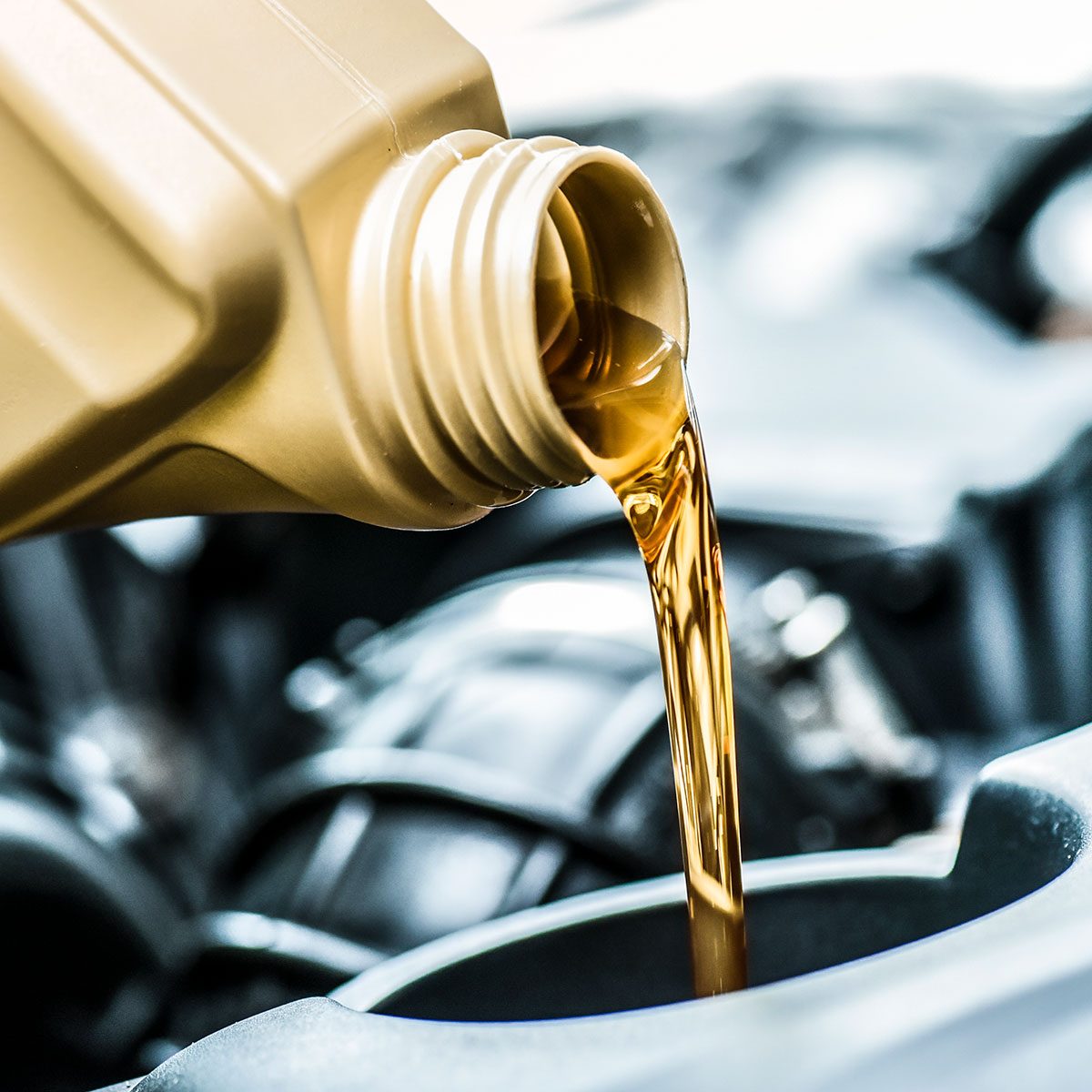What does 5W-30 or 10W-40 actually mean? Here's why knowing your oil grade is important to the health of your engine.

What the “W” in Engine Oil Grades Really Means

In the 1950s, motor oil started to come in grades. Some grades were formulated to work better in cold weather, while others helped keep hot engines lubricated more effectively. Today, with our increasingly sophisticated engines, it’s even more vital to use the correct grade of motor oil in our vehicles so we don’t risk damaging our engines.
“The people who built your engine created it to rutesn with a specific oil, and tested it rigorously before confirming it had the appropriate viscosity and additives,” says Alan Gelfand, owner of German Car Depot. Because of that, it’s important to know what grade of oil your car requires.
Here’s more about engine oil grades, and which should be in your car.
What Is an Engine Oil Grade?
An engine oil grade is basically just a way of describing how thick your oil is, aka its viscosity. Think of viscosity as the difference between honey verses water. With motor oil, viscosity is designated by numbers, such as 5W-30 or 10W-40. The ideal engine oil is viscous enough to form a lubrication barrier between metal engine components, but thin enough to flow without the engine having to force it.
What Does the “W” in Engine Oil Grades Stand For?
The “W” in engine oil grades stands for “winter,” though it’s a common misconception that it stands for “weight.” The number before the W tells you how well it handles the cold. The lower that number, the better it will perform in freezing temperatures.
“Smaller numbers mean your oil won’t turn into molasses when it’s cold out,” says Gelfand. “If you leave a bottle of 15W-40 outside in the winter, which is a very thick engine oil, and go to pour it out, it barely comes out. If the same thing happens in your engine, that’s bad news for your engine components.”
How To Read/Interpret an Engine Oil Grade
The first number, such as the 5 in 5W-30, is the cold-weather specification. The lower the number, the more viscous the oil will remain when it’s cold out. The second number, such as the 30 in 10W-30, is what happens when your engine is running hot after you’ve been driving for a while. The bigger the number, the thicker it will stay to protect engine components.
FAQ
What’s the difference between SAE and API ratings?
SAE stands for the Society of Automotive Engineers, which developed the classification system that defines the viscosity of oil. They make the rules for those thickness numbers, like 5W-30 and 10W-40.
API stands for the American Petroleum Institute, which evaluates oil quality. When oil companies prove their formulas function as specified within regulations, API gives them designation letters, such as SN or SP.
How do I know which oil grade my car needs?
Your vehicle’s owner’s manual will specify what SAE and API designations to use. It may also suggest which oils to substitute under certain conditions, such as various weather conditions and terrain. “Unfortunately, most people tend to ignore the owner’s manual unless they absolutely have to read it as a last resort,” says Gelfand. “But there’s a reason why the manufacturer spends the time and money to make them.”
What happens if you use the wrong engine oil?
It can damage your engine. If your oil’s too thick for cold weather, your engine might not start, or it’ll take forever to get oil flowing to all the parts that need it, causing internal failures, heat scoring and valve-train noise.
“If it’s too thin when hot, it basically stops doing its job, and your engine parts start grinding against each other; neither of those scenarios ends well for your wallet,” says Gelfand.
Can you mix engine oil grades?
You can mix oil grades, but you probably shouldn’t. “It’s like mixing different types of paint; you might get something that works, or you might get a mess,” says Gelfand.
If you’re desperate and need to top off because you’re low on oil, mixing a little won’t kill your engine. But don’t make a habit of it. If you stick with what your manual says, you’ll be much better off.
Some vehicles, like BMWs and Mercedes, not only need the correct oil grade but also a specific concoction of additives in the oil that will cause chemical reactions that the engines were made to run on.
“In this case, mixing generic engine oil, even if it is the appropriate grade according to your manual, can still cause catastrophic damage because the oil doesn’t behave like the one they formulated for that particular engine; an even more important reason you should be reading the owner’s manual very carefully,” says Gelfand.
About the Expert
- Alan Gelfand has been the owner of German Car Depot for more than 30 years. His business is an independent automotive service center in Hollywood, Florida, specializing in the service and repair of German vehicles.




















